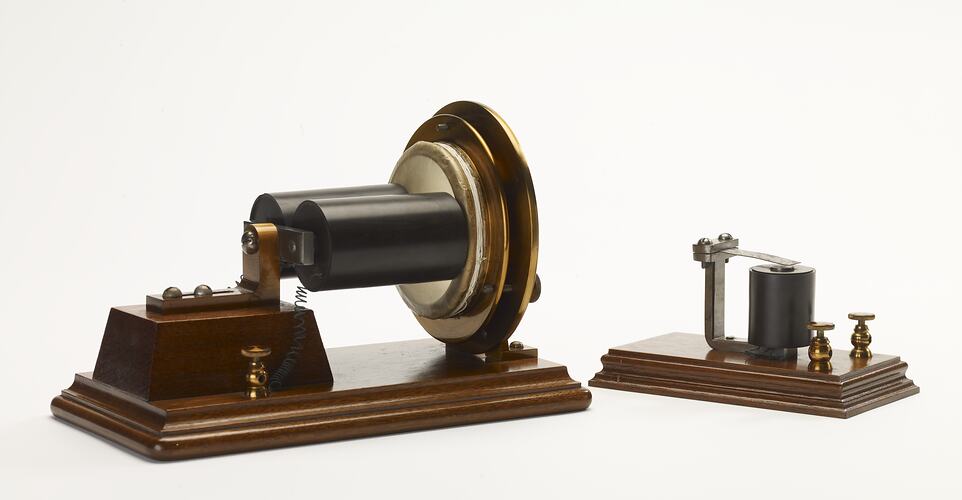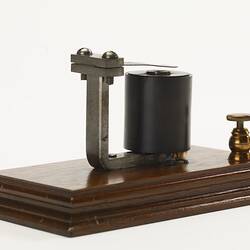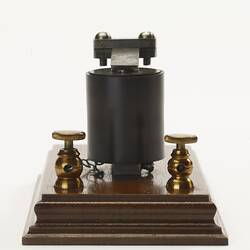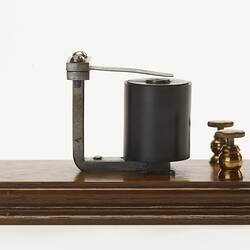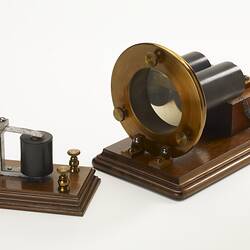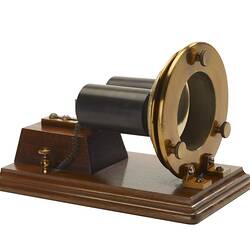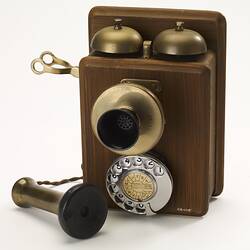Summary
Harmonic telegraph receiver, used by Alexander Graham Bell for some of his earliest telephone experiments, circa July 1876, in Boston. Used originally with the ear pressed firmly against the reed (damped) for telephone reception. It was used with a transmitter.
The receiver in Alexander Graham Bell's first successful telephone experiment on 10 March 1876 was similar to this instrument.
It could respond to different harmonies depending on the length of the metal reed. The metal reed resonated at a certain frequency, similar to a tuning fork.
Bell initially developed the harmonic receiver for his experiments in telegraphy, in which he was investigating the possibility of sending multiple messages at the same time, on different frequencies. Hearing the sounds it produced, he realised it might be possible to transmit the human voice.
Physical Description
Varnished wooden base, brass terminals, single pole electromagnet wound with green silk- covered wire on black bobbin, with cylindrical ebonite cover. Electromagnet resistance 3 ohms. In wooden box.
More Information
-
Collecting Areas
-
Acquisition Information
Loan & Subsequent Donation from Mr Charles O.V. Moody, by Jul 1990
-
Past Owner
Mr Edward S. Symonds, Melbourne, Greater Melbourne, Victoria, Australia
Thomas Watson probably associated with manufacture -
User
Mr Alexander G. Bell, Boston, Massachusetts, United States of America, 1876
Thomas Watson probably associated with manufacture -
Classification
-
Category
-
Discipline
-
Type of item
-
Exhibition Collection Management
105 mm (Length), 170 mm (Width), 950 mm (Height)
See child records
-
Keywords
